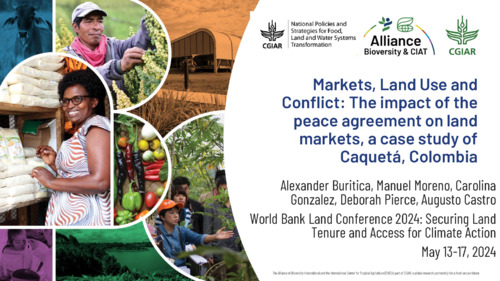Markets, land use and conflict: The impact of the peace agreement on land markets. A case study of Caquetá Colombia
Armed conflicts continue to take a huge toll worldwide, including in Colombia, where the government signed a peace agreement in 2016, ending more than 50 years of conflict. This research explores the relationship between conflict violence and land dynamics, including land use, economic valuation, and transactional patterns. Leveraging the Colombia peace agreement as a natural experiment, we investigate its impact on rural land transactions and deforestation, particularly focusing on 125 cattle farms in the Caquetá region. These farms have been categorized based on their proximity to highly conflict-affected areas. This allows for a comparative analysis of land transactions and deforestation rates before and after the signing of the peace agreement in the designated year. To conduct this analysis, we employ data from Certificates of Tradition and Freedom (CTL), which provide a comprehensive historical record of land transactions for each cattle farm from 1940 to 2023. Additionally, we utilize satellite images from Global Forest Watch to measure deforestation from 2001 to 2022. Applying an econometric differences-in-differences model, we observe a decrease in rural land sale transactions within high-conflict areas following the implementation of peace agreement. However, our analysis does not yield statistically-significant effects on deforestation within these areas. Our findings underscore the pivotal role of policy changes in shaping the lives of individuals and fostering the development of new economic activities, such as conservation efforts. They provide evidence that successful implementation of the peace agreement can yield positive outcomes, not only in terms of peace and stability but also in supporting conservation initiatives. Peace agreement compliance is critical for sustained conservation.

